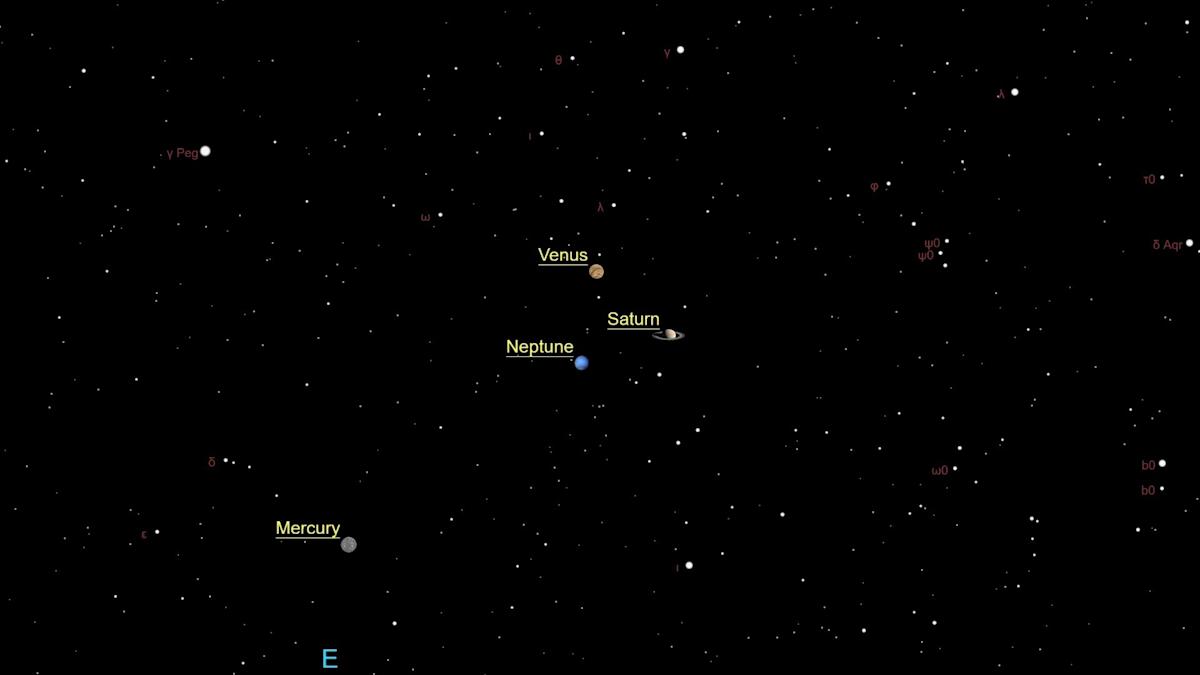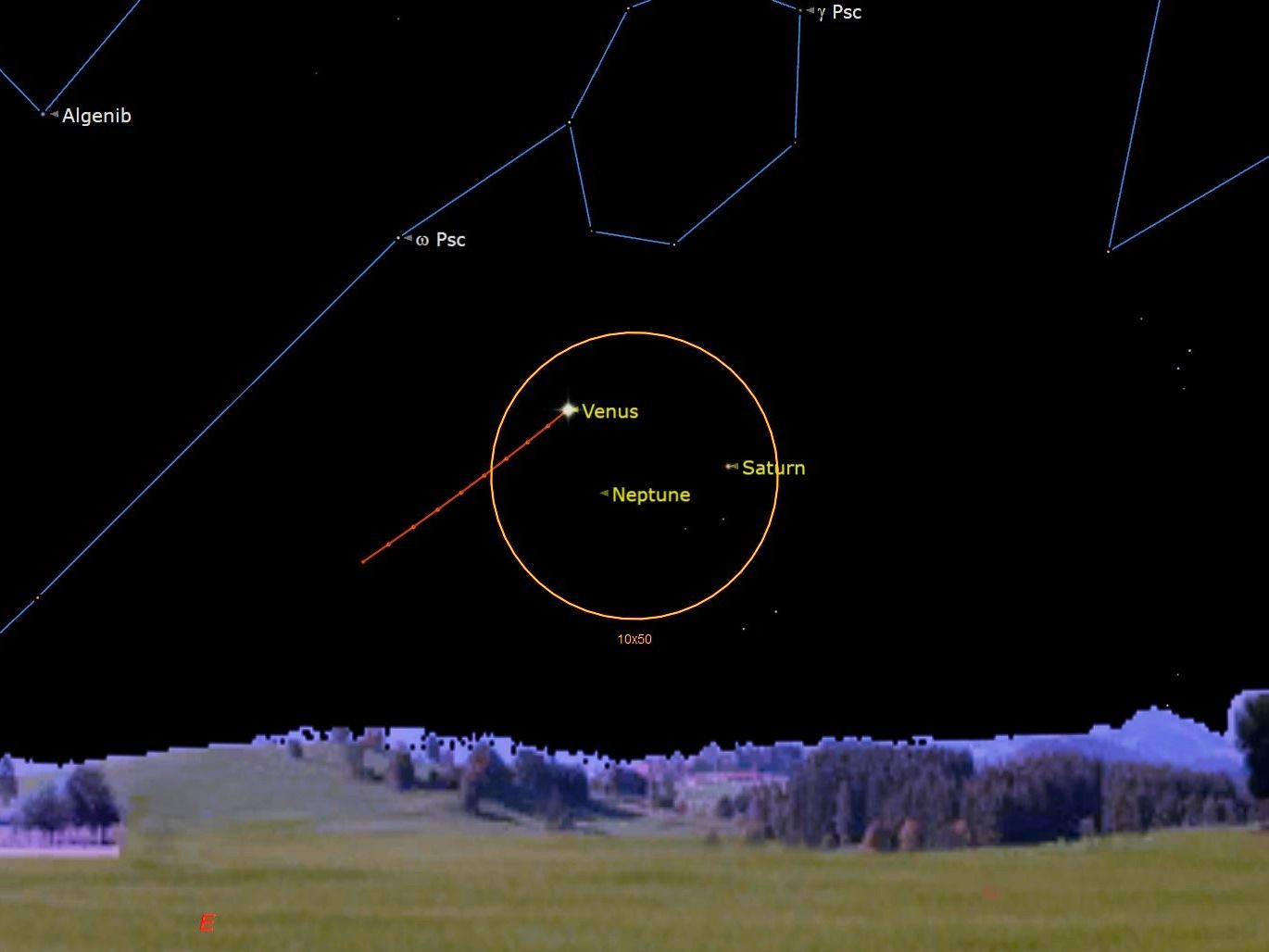On Friday, May 2, stargazers have a unique opportunity to observe the distant planets Neptune, Saturn, and Venus in the pre-dawn sky. These three planets will appear close together in a striking formation, a sight that will become increasingly rare as the month progresses.
If you’re in New York, you can catch the planets just before the sun rises at 5:53 a.m. EDT (0953 GMT). For the best view, head to a location with a clear horizon an hour before sunrise, around 4:40 a.m. EDT (0830 GMT), when the planets will just rise above the horizon.
How to Locate Venus, Saturn, and Neptune, and Viewing Tips with Binoculars
To find the planetary trio, first look for Venus, which will be the brightest of the three, shining at a magnitude of -4.41. It will be positioned highest in the sky, clearly visible even as the sky lightens. Saturn, with a magnitude of +1.19, will be located a few degrees lower and to the right of Venus. Neptune, the dimmest of the three with a magnitude of +7.94, will appear farther down and slightly to the right of Venus, about two finger widths away. Given Neptune’s faintness, you’ll need binoculars or a telescope to spot it clearly.

Neptune’s faintness makes it impossible to see with the naked eye, as it shines too dimly for human vision (typically around +6.5 under dark conditions). To observe Neptune, a pair of high-powered binoculars or a good-quality telescope is essential. The trio of planets will fit within the field of view of standard binoculars, making it easier to see them together. Just be sure to avoid looking directly at the rising sun, which can cause serious eye damage.
Shifting Planetary Alignment and Tips for Enhanced Viewing with Telescopes and Cameras
The alignment of these three planets will shift over the course of May. By May 9, Neptune, Venus, and Saturn will line up in nearly perfect alignment across the eastern horizon. As the month progresses, Saturn and Neptune will continue to rise higher in the sky, while Venus will stay closer to the horizon, eventually breaking away from the formation.
For those looking to get a closer look at the planetary trio, a telescope or binoculars can enhance the experience. Guides for the best binoculars and telescope deals are available for those interested in exploring the planets in more detail. Additionally, the right camera gear, such as the best cameras and lenses for astrophotography, can help capture these celestial events for anyone eager to document the sight.


